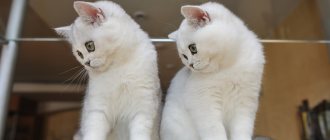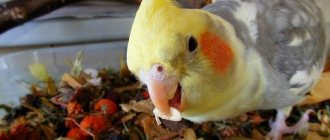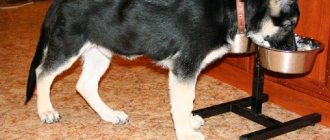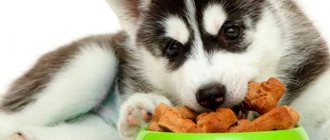Save the article:
When a small kitten appears in the house, it needs help to adapt to new conditions. The psychological comfort and health of the baby depends on this. To ensure that your furry pet’s life runs smoothly, a set of essentials is prepared for him. Great importance is attached to hygiene procedures, good nutrition, and timely vaccination. Caring for a kitten is not difficult if you follow all the rules of keeping recommended by veterinarians.
Essentials
Before you bring a newborn or older kitten home, you should purchase a tray with filler, food bowls, a scratching post, toys, grooming tools, bedding, and a carrier. Most of these items will also be needed to care for an adult cat, so you should choose them responsibly.
global $ads_google; //data-ad-slot=”2475549904″ $ads_google = empty($ads_google) ? false : true; ?> if ($ads_google == false) {?>
$ads_google = true; ?> } ?>
Tray
Even if the cat is expected to be outdoors in the future, a small kitten will need an indoor litter box. If the grown pet does not leave the house, the tray will remain a permanent place for him to cope with his daily needs. Therefore, the toilet container should initially be convenient for use and cleaning. All modern models of trays are divided into two types: closed and open. The design of the latter assumes the presence or absence of filler.
Open trays with grids are not filled with absorbent material. They allow you to save on filler. But such toilets require timely cleaning, otherwise the air in the house accumulates a specific odor. If the container is filled with filler, the problem partially disappears, since most materials have adsorption properties.
Closed trays look like a house. They use special fillers that absorb the smell of urine and do not leave marks on the paws. An enclosed litter box is convenient in the home as it looks aesthetically pleasing and does not create problems caused by the unpleasant odor from cat feces. A characteristic feature of a closed tray is its large size, so it can be difficult to find a place for it in the apartment. Another disadvantage of such products is the high price.
The baby must be toilet trained from the first days of life in the house; postponing this moment of education until “later” can create unwanted problems.
Tray filler
Cat litter for the litter tray differs in composition. This determines their appearance and principle of operation. According to the last criterion, toilet material is divided into two types: clumping and absorbent. When wet, particles of clumping filler stick together into lumps. After they are removed, a new portion is added to the container. This filler is completely replaced every 5-7 days. The composition of clumping varieties can be different, most often these are clay minerals:
- vermiculite;
- atapulgitis;
- bentonite.
It is recommended to use clumping clay litter only when the kitten grows up. This is explained by the fact that babies often taste everything, and mineral lumps that get into the stomach can cause health problems. In addition, wet particles stick to the paws. For small cats, a litter made from ground corn cobs, paper, and wood is desirable. If such lumps enter the intestines, they come out naturally without causing harm to health.
The absorbent filler, unlike ordinary sand, consists of large or small granules with high adsorption capacity. Once wet, the liquid is quickly absorbed by the material, leaving the bottom of the tray dry. The composition of the material can be very different:
- clay minerals;
- blotters (clay with paper);
- wood pellets;
- wood shavings;
- silica gel;
- corn granules.
When caring for a kitten, this material is changed every time the pet goes to the toilet. The choice of filler is determined not only by the characteristics of the constituent components, but also by the preference of the kitten itself. If for some reason the material causes aversion in a young cat, then it is worth trying a different variety.
Choosing a place for the toilet
global $ads_google; //data-ad-slot=”2475549904″ $ads_google = empty($ads_google) ? false : true; ?> if ($ads_google == false) {?>
$ads_google = true; ?> } ?>
Most often the tray is placed in the bathroom or toilet. In this case, the problem with the smell and not very aesthetic appearance of the accessory after the cat has visited it is solved. But in this case, care must be taken to ensure that access to the bathroom is always open to the small pet. In some cases, the container is placed in the hallway. This is convenient for a cat, but not always comfortable for a person. The compromise in this situation is a closed tray.
scratching post
A cat's growing claws need constant sharpening. If the scratching post is not prepared, then damage to the upholstered furniture in the house is guaranteed. Various types of devices help satisfy a cat’s reflex in sharpening its claws. This can be a board attached to the wall, covered with a soft thick fabric, or a vertical post with sisal thread wound around it. The working area of the scratching post should be at a height accessible to the baby.
To accustom a kitten, it is recommended that you first bring it to this accessory and place its paws on a rough surface. You can additionally spray your homemade sharpener with catnip. The pleasant smell will attract the kitten to the device and gradually it will get used to sharpening its claws in this particular place.
Dishes
The rules for caring for a kitten dictate the need to select three bowls for food. The first is for water, the second is for dry food, the third is for wet or liquid food. The quality of the material from which the dishes are made remains at the discretion of the owner. It can be plastic, metal, ceramics, glass. The main thing is that the bowls are durable, without chips or cracks.
Another necessary condition is the stability of the containers. A bowl that slides on the floor will make your cat uncomfortable while eating. To avoid discomfort, it is advisable to choose plates with a stable platform, the surface or rim of which has an anti-slip coating.
When buying plastic dishes, you need to make sure that they do not emit harmful substances (phthalates), which can cause acne in cats.
Toys
Fluffy babies love to play, so you need to prepare a variety of toys and activities for them. Both ready-made and home-made products are suitable for the game. Pet stores offer a wide selection of jumping, rolling, and moving toys. It is important that they meet several requirements.
Firstly, the toy should not be too small, otherwise an inexperienced baby may swallow it. Secondly, only light objects that a weak kitten can move are suitable for play. Thirdly, the product should not be too hard so that a growing cat does not break its teeth when biting it.
If your kitten has to play alone, buy sound toys for him - they will create a feeling of feedback.
Hygiene and grooming items
global $ads_google; //data-ad-slot=”2475549904″ $ads_google = empty($ads_google) ? false : true; ?> if ($ads_google == false) {?>
$ads_google = true; ?> } ?>
Hygiene procedures are mandatory for cats of any age. Caring for a kitten includes brushing the fur, cleaning the ears and eyes, and bathing. The teeth and claws of the animal are not ignored. For all care activities, it is necessary to prepare a set of tools and products.
To keep your cat's fur in perfect condition, you will need combs in the form of a brush, comb, or mittens. For a long-haired pet, the kit is completed with a slicker brush and a tangle cutter. Kittens of short-haired breeds are combed once a week, long-haired ones - up to three times. During molting, this procedure is repeated daily.
For detergents, buy hypoallergenic shampoo (preferably with a conditioner effect). When the baby reaches the age at which bathing is allowed, these hygiene items should already be at the ready. You can also keep the coat in a clean, beautiful condition using grooming sprays. They clean hair from dirt, make combing easier and allow you to do without water procedures.
To care for a kitten you will need cotton pads and swabs, hydrogen peroxide. Using these accessories, the cub's ears are cleaned once a month.
Toys
A kitten is the same child. And even as they grow up, cats do not stop loving to play, and each has its own preferences that also need to be taken into account. Some cats like mice, others like balls, and others like sticks.
- By observing your kitten, you can find out his preferences, what his paws are most often drawn to.
- And a very important rule that many people forget: no matter how much you want to, you should not play with the kitten with your hands.
- The kitten perceives the owner's hand as an object to fight, which leads to scratches.
It is necessary to immediately accustom the kitten to associate the owner’s hand only with what brings him affection.
Caring for newborn kittens
Bed. A newborn kitten needs round-the-clock care, especially if it is left without a mother cat. His “nest” should be equipped with a warm bed. For this, use a warm heating pad. It is placed in a basket or box where the baby sleeps. An alternative could be a plastic bottle filled with warm water (approximately 36-38 degrees) and wrapped in a cloth. After two weeks, the temperature is reduced to 28 degrees, and after another week - to 24 degrees. Caring for a kitten with a heated bed is extremely important if it is a small Sphynx or any other hairless member of the cat family.
Nutrition. If a cat feeds its cubs milk, then they begin to feed them natural food only in the fourth week of life. Caring for a newborn kitten left without a mother is a little more difficult. The baby should receive food every 2.5 hours, even at night. They feed him using a pipette or a bottle with a nipple attached to the spout. The container is sterilized after each feeding, and a fresh portion of milk food is prepared each time. The orphan is fed with a special cat's milk substitute, which is sold in pet stores. Temporarily, you can use rice water for feeding.
Hygiene. Around the eighth day of life, kittens open their eyes. If this event drags on, you should contact your veterinarian. With a simple procedure, it will help your eyelids open. By day 14-15, kittens can already hear fully, and by day 20 they begin to move independently. At this time, caring for the kitten consists of simple hygiene procedures that are aimed at preventing inflammation. If a kitten grows up without a mother, then to imitate licking, wrap it in a damp linen napkin and lightly massage its tummy. This massage improves the digestion of a newborn kitten and helps to go to the toilet.
Water
In addition to food, the kitten must have access to clean water and doubly so for those who feed the kitten with dry food. Cats are big enthusiasts when it comes to drinking water, they all have completely different quirks and British kittens are no exception. British cats prefer to drink from a container that they don't have to bend over to.
Caring for a one-month-old kitten
Nutrition. By the fifth week, the kitten already weighs 240-260 grams. For weight gain to be physiological, the feeding interval, starting from the fourth week, should be 3-4 hours. Food is provided only during the daytime. In addition to milk, the diet of a one-month-old kitten includes lean beef, turkey, canned food for kittens, and vegetable puree. All solid ingredients must be ground until homogeneous, because babies are not yet able to chew food.
global $ads_google; //data-ad-slot=”2475549904″ $ads_google = empty($ads_google) ? false : true; ?> if ($ads_google == false) {?>
$ads_google = true; ?> } ?>
Toilet. At 1 month, you can place a tray next to the bed. It is necessary to place the baby in the container after each meal. To begin with, you can put disposable absorbent diapers in the tray. After some time, filler is poured in instead. It is important to ensure that the kitten does not eat lumps and granules from the tray.
Hygiene. A one-month-old cat cannot be bathed yet. Care procedures consist of regular examination and washing of the eyes and ears. To do this, use a cotton pad soaked in warm water. Sometimes kittens experience watery eyes in the morning. If there are no suspicious purulent impurities in the discharge, then regular washing with water is sufficient.
When caring for a small kitten, you should pay attention to the gums. If they become red and swollen, a teething numbing gel should be used.
Adaptation period
In order for adaptation to be successful and quickly, the kitten is fed its usual food in the first days. The second week of your baby’s stay with you is the transition phase. Prepare a cozy house for the cat, try to take him with you as little as possible, even if he cries. Within 3-4 days the kitten gets used to the new place.
Hide electrical wires, do not leave sharp or dangerous objects, remove medications and insecticides. In the first days, let the kitten into a limited part of the home, this will make it easier for him to get used to it.
How to care for two month old kittens
Nutrition. Starting from the second month, the grown-up pet is transferred to a more expanded menu. It includes lean meat (beef, turkey, chicken), sea fish, dairy products, vegetables, and cereals. The kitten should not be offered river fish, bones, fatty whole milk, potatoes, or pasta. Any salty, smoked or spicy dishes are also subject to exclusion.
If you choose ready-made food, then it should be marked “for kittens.” The feeding frequency during this period is 5-6 times a day. A two-month-old kitten significantly gains weight and the mark on the scale reaches 680-900 grams.
Toilet. The tray is placed in a permanent place. At this age, the cat is still poorly oriented and has not developed the habit of going to the toilet in a certain place. Therefore, the task of the owner who cares for the kitten is to help him get used to this. To do this, the pet is manually placed in the tray. To attract attention, you can use special sprays that are sprayed directly onto the filler.
Hygiene. The procedures for caring for a 2-month-old kitten remain the same. This includes cleaning the ears with cotton pads, washing the eyes with boiled water, and combing the fur with special brushes. From two months old, kittens can already be bathed. Water procedures are used no more than once every 4-5 weeks.
Vaccination. Immunization begins when the cat is 2 months old. Vaccination helps protect a still weak body from plague, viral, rhinotracheitis, calicivirus, and rabies. Some multivalent vaccines contain a component against chlamydia. Before this, the pet must be treated for ectoparasites and worms.
Chipping. At 2 months, a young cat can already be microchipped, although veterinarians believe that this can be done earlier, since introducing a microchip under the skin does not affect the well-being and health of the pet. The tiny chip contains complete information about the cat: name, date of birth, address and other important data.
Maintaining Health
A kitten is a living creature that can get sick, so it is important to know how to support its immunity. It is advisable to visit a veterinarian who will tell you about the first symptoms of diseases and poisonings, draw up a vaccination schedule, and recommend means and methods of combating fleas, ticks and other parasites.
Vaccinations
You should not refuse vaccinations, even if the kitten is indoors and does not go outside. Animals are vaccinated against the following diseases:
- panleukopenia (feline distemper);
- rabies;
- infectious peritonitis;
- viral rhinotracheitis (feline herpes);
- feline viral leukemia.
The first vaccine is administered to kittens at the age of 2-3 months.
They use polyvalent compounds that protect against several diseases at once. Revaccination is carried out after 21 days. The pet must be kept in quarantine conditions, since immunity is developed only 14 days after vaccination.
According to the plan, vaccination is carried out for one-year-old kittens, then annually. All data on vaccinations performed is entered into the animal’s veterinary passport. They indicate not only the date of vaccination, but also the series, number, and name of the drug.
The first vaccination does not include protection against rabies; this vaccine is administered separately, the same applies to the lichen vaccine. The rabies vaccine causes depression in the pet, it becomes lethargic. If the cat does not come into contact with other animals and does not go outside, it is best to vaccinate against rabies at the age of 6-8 months, then annually, at approximately the same time.
There are vaccines for other, rarer diseases. Vaccination is carried out at the request of the animal owner. Vaccination is carried out only for a healthy pet who plays vigorously, eats well and does not have a high temperature. Before vaccination, the veterinarian must examine the baby.
Care for 3 months and older
Nutrition. The diet of an adult fluffy during this period is very varied: meat, fish, milk, cottage cheese, egg yolk, cereals, vegetables, cereals (except corn). Food can be offered in bite-sized pieces. But you cannot put the entire daily amount of food into a bowl at once. The pet has not yet learned to clearly control its appetite, so it may eat too much. The norm for one feeding is 200 grams per 1 kg of animal weight. At 3 months, a kitten eats 400 grams of food per day, and at 4 months – 600 grams.
Natural food and wet food should be warm.
Hygiene. Caring for a kitten includes the usual set of hygiene procedures, which is complemented by brushing teeth. By the age of four months, all of the cat’s teeth have erupted, so prevention of dental problems in domestic hermits is mandatory. Teeth are cleaned using small brushes and a paste with a pleasant smell.
global $ads_google; //data-ad-slot=”2475549904″ $ads_google = empty($ads_google) ? false : true; ?> if ($ads_google == false) {?>
$ads_google = true; ?> } ?>
Vaccination. At 3 months the cat is vaccinated a second time. Revaccination includes the same drugs that were used a month ago. The next vaccination is scheduled after a year. After the procedure, you should carefully monitor your pet's well-being. If you notice apathy or restlessness, fever, sneezing, swelling in the injection area or other suspicious symptoms, you should contact a veterinary clinic.
The exciting period for the owner of caring for a kitten passes quickly. But if the pet is surrounded by care and attention, then many problems bypass it. Kotofey grows and develops according to his age and enters adulthood healthy and cheerful.
What to do before purchasing
It would not be superfluous to remind you that before getting a kitten, you need to check all family members for allergies.
- And you need to understand that this is not a temporary toy; the cat will be a kitten for a completely minuscule period of time.
- You should be determined to purchase a cat or cat.
Arrangement of the place
After solving the feeding problem, it is important to organize a nest for the baby - a safe, warm and dry place that will be protected from drafts. To arrange the house itself, you can use a small, thick cardboard box or a plastic basin. A waterproof oilcloth, soft fabric and a disposable diaper are placed on the bottom, which must be changed regularly. The bottom should be soft but elastic so that the cat can crawl and not get tangled in rags. The box should be installed in a quiet place and ensure twilight inside, covering it with a lid or a piece of fabric. You can put a soft toy in it, which will imitate the presence of a cat and additionally provide the kids with protection and reassurance.
A cat warms its cubs by maintaining an optimal temperature and protecting them from hypothermia, so first of all you need to take care of the surrounding temperature. In the first week, the temperature in the cat's house should be within 30-33°, starting from the second week - 27-29° and gradually raised to 24°. It is advisable that one side is a little cooler so that the kitten can crawl there and avoid overheating. To ensure constant heat you can use:
- an infrared lamp (the distance at which it will be suspended is determined using a thermometer);
- bottles of warm water or a regular heating pad, wrapped in several layers of towels, but they are suitable for emergency heating at first, since they require frequent changes, which creates additional hassle.
Using electric heating pads or heaters for heating is dangerous!
During the first two weeks (until the eyes open), the kittens will feel comfortable in semi-darkness, so it is also recommended to feed them in dim lighting.
Teeth
When the kitten has already learned to eat solid food, he needs to brush his teeth every 1-2 days . This can be done with an ordinary cotton swab, carefully removing any remaining food remaining on the teeth and the resulting plaque. If you follow these recommendations, your pet will never have digestive problems.
© shutterstock
What medications to buy
The first thing you should do before purchasing a kitten is to find the nearest veterinary clinic with 24-hour operation.
- There are different situations, and you won’t be able to insure yourself against everything, so be sure to have the clinic’s phone number at hand, where you can call even at night.
- The kitten must be vaccinated; the first vaccinations are usually given by the breeders, and the owners are already given according to the schedule that is proposed.
If you do not plan to breed kittens, then you need to do sterilization. Be sure to give the kitten the antiparasitic drug Stronghold selamectin once a quarter.
Antiparasitic medications protect cats from ear mites, so there is no need to put any additional medications in their ears. Also, you need to treat your pet with Frontline flea medication.











